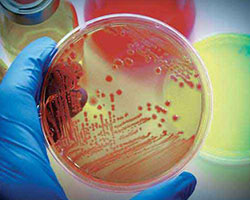
| Report Code: 40254 | Published: July 2019 | Pages: 134 | Available format: |
| Therapeutic Area(s): | Infectious | Report Type: Epidemiology Insights and Forecast Reports |
Human papilloma virus (HPV) comprises more than 200 related viruses, which spreads usually through anal, oral, and vaginal sex. The sexually transmitted HPV infections are divided into two groups: low-grade and high-grade HPVs. The low-grade HPVs result in the warts around the mouth, throat, and genitals. Additionally, it can lead to the growth of benign tumor in the respiratory tract (recurrent respiratory papillomatosis). Whereas, the high-grade HPV infections might cause various types of cancer, including cervical, anal, and penile cancer. HPV-16 and HPV-18 subtypes are most commonly associated with these cancers.
Moreover, it is difficult to diagnose HPV infections as most of the HPV infections are asymptomatic. However, HPV test, Pap test, and HPV/Pap test co-test are some of the tests used to diagnose HPV. Furthermore, certain medications are being prescribed by the physicians for the treatment of genital warts, and lesions, such as salicylic acid, imiquimod, podofilox, and tri-chloroacetic acid.
Herpes simplex, also known as HSV, is a type of viral infection which affects the mouth, genitals, or anal area. The virus can spread from a person, resulting in the outbreaks of sores. Herpes type 1 (HSV-1) and herpes type 2 (HSV-2) are the two types of HSV. HSV-1 is mostly transmitted by oral-to-oral contact leading to the infection in or around the mouth (oral herpes). Whereas, HSV-2 is usually transmitted sexually, causing infection in the genital or anal area (genital herpes). Infections caused by both HSV-1 and HSV-2 are often asymptomatic; however, they can result in mild symptoms or painful blisters or ulcers at the site of infection.
From the epidemiology point of view, the incident cases of HPV infections in the 12 major markets (termed as 12MM, which include the U.S., Japan, the U.K., Germany, France, Italy, Spain, Russia, India, China, Indonesia, and Vietnam) are expected to increase from 620,652 cases in 2016 to 711,609 cases by 2028, primarily on account of the growing aging population across the globe. Another factor responsible for the rising number of HPV infection cases is unprotected sex.
The prevalent cases of HSV-1 in the 12MM are expected to increase from approximately 2,324.9 million in 2016 to about 2,871.5 million by 2028. People aged 15 to 49 years are the most affected by the virus. According to the World Health Organization (WHO), in 2015, approximately 140 million people aged 15-49 years were infected with genital HSV-1 infection.
Unmet Medical Needs for HPV and HSV Infections
The report also covers some of the unmet medical needs responsible for the increasing incidence rate of HPV and prevalence rate of HSV infections. Over the past few decades, considerable progress has been marked in the treatment of patients diagnosed with HPV and HSV. However, only a few drugs have been approved for these infections. Although, the current marketed vaccines for HPV infections are found satisfactory in the management of disease, but there is a further need to focus on improving the quality of therapeutic drugs for the treatment of HPV and HSV infections.
Key Report Insights
The report provides detailed overview of HPV and HSV infections, highlighting the causes, risk factors, classification, prognosis, pathophysiology, unmet medical needs, diagnosis, and treatment options for the diseases. The report also provides comprehensive insights of HSV and HPV infections in the 12MM. Moreover, the incidence of HSV and HPV infections for historical and forecasted periods has been analyzed in-depth and is further segmented into type-specific (for HSV) and sex- specific data (for both HSV and HPV infections).